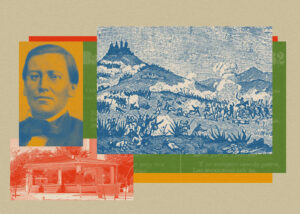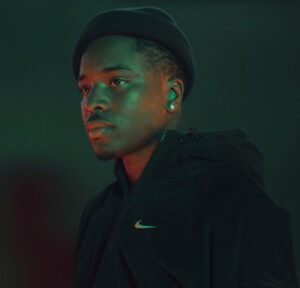

In a world increasingly defined by digital interfaces and automated mass production, Pagani continues to be a beacon of artistry and mechanical poetry. The debut of the open-air Huayra Codalunga marks yet another bold chapter in the boutique Italian automaker’s quest to merge art and engineering into something that transcends both. Presented as a limited-edition speedster, this new iteration of the Huayra embodies a delicate tension between radical performance and quiet elegance — a tension that has come to define Horacio Pagani’s entire career.
At first glance, the Huayra Codalunga looks like something drawn from a dream — an elongated, teardrop-like form that appears ready to slice through the atmosphere with barely a whisper. It is a visual love letter to the long-tail racers of the 1960s, which inspired both the design language and aerodynamic principles of this exceptional machine. The term “Codalunga” literally means “long tail” in Italian, and it reflects not just an aesthetic flourish, but a deeply functional aerodynamic philosophy.
This is a car built not merely to move but to sing through the air, harmonizing form and function in a way few manufacturers dare to attempt today. The open-air cockpit accentuates this feeling, inviting the driver and passenger to experience the world at high speed without the barrier of a roof, while still enveloped in a cocoon of fine craftsmanship.
Pagani’s design philosophy is rooted in a belief that art and engineering are not opposing forces but complementary expressions of human creativity. Nowhere is this more apparent than in the cabin of the Codalunga. Step inside, and one is greeted by an interior that feels more like an artist’s atelier than an automotive cockpit. The centerpiece is a series of hand-chiseled metal sculptures integrated directly into the dashboard and door panels. Each piece is unique, meticulously crafted by Italian artisans using techniques more commonly found in Renaissance sculpture workshops than car factories.
These elements are not decorative afterthoughts; they are structural and emotional anchors. They remind the driver that they are not simply operating a machine but engaging in a conversation with a moving work of art. This sense of dialogue is central to Horacio Pagani’s vision — the belief that a car should stimulate the senses, provoke thought, and offer joy far beyond mere transportation.
The choice to adopt an open-air speedster format is equally significant. The removal of the roof does more than just lower the weight and center of gravity; it fundamentally changes the driver’s relationship with the car and the environment. Every gust of wind, every note from the exhaust, every nuance of the road surface becomes part of the sensory tapestry. In the Codalunga, Pagani has delivered an experience that is immersive, almost meditative, yet wildly exhilarating.
Beneath the sculptural exterior lies a powerplant befitting such an ambitious design. The Codalunga retains Pagani’s now-iconic twin-turbocharged 6.0-liter V12 engine, supplied by AMG. It produces over 840 horsepower, channeling its force through a seven-speed sequential gearbox that rewards skillful, precise driving. The engine note — a throaty, operatic roar — is left unfiltered in the open-air configuration, enveloping the occupants in a rich auditory experience that borders on the spiritual.
The elongated tail of the Codalunga is not merely a stylistic homage; it also plays a crucial aerodynamic role. By extending the bodywork, Pagani’s designers have optimized the airflow, reducing turbulence and increasing high-speed stability. The result is a car that feels planted and secure, even as it approaches speeds that would make most supercars quiver. This stability is paired with an exceptionally light curb weight, achieved through obsessive material selection and engineering. Carbon fiber is used extensively throughout the chassis and body panels, allowing the Codalunga to weigh in at a svelte figure that amplifies its nimbleness and responsiveness.
Inside, the cabin is a study in contrasts: raw, hand-worked aluminum juxtaposed against buttery-soft leathers and delicate woven textiles. The exposed gear linkage is a reminder of the mechanical heart that beats beneath the elegant surface, while the analog dials recall an era before touchscreens and digital distractions took over the automotive landscape. Even the steering wheel is a masterpiece, sculpted from a single billet of aluminum and then wrapped in the finest leather, providing tactile feedback that connects the driver intimately to the front wheels.
Pagani’s dedication to detail borders on the obsessive. Every fastener, every stitch, every surface has been touched by human hands. In an industry dominated by robotic assembly lines and computer algorithms, this approach feels almost radical. Yet it is precisely this human touch that imbues the Codalunga with its soul.
Only a handful of these vehicles will be produced — a fact that only enhances their mystique. Pagani has always favored extreme exclusivity, not as a marketing gimmick but as a way to preserve the purity of each creation. Every Codalunga is tailored to its owner, each detail customizable to reflect the personal tastes and stories of those fortunate enough to acquire one. From bespoke paint colors inspired by Renaissance paintings to personalized sculpture designs in the cabin, no two Codalungas will ever be alike.
The relationship between Pagani and its customers is deeply personal. Buyers are invited to the atelier in Modena, where they collaborate directly with the design team. This process transforms the car from a mere object into a co-created masterpiece, echoing the tradition of Renaissance patrons who would commission unique artworks from the great masters of the day.
On the road, the Codalunga transcends expectations. It is devastatingly fast, yes, but more than that, it is profoundly engaging. Each gear change, each corner, each acceleration surge is an event, a moment to be savored. The absence of a roof enhances this drama, blurring the line between the driver and the outside world. The open-air experience is not merely a design flourish but a fundamental aspect of the Codalunga’s identity.
Beyond its technical capabilities, the Codalunga is a statement against the homogenization of the automotive industry. In a market increasingly filled with electrified hypercars and automated driving aids, Pagani’s commitment to analog purity stands out. There is no compromise to comfort or convenience in the traditional sense. Instead, every decision, from the manual gearshift to the hand-chiseled interior sculptures, prioritizes emotion, connection, and artistry above all else.
This philosophy resonates not just with car enthusiasts but with anyone who values craftsmanship and individual expression. The Codalunga is not a mass-produced commodity but a rolling sculpture, a testament to the possibilities that arise when imagination is allowed to flourish without constraint. It serves as a powerful reminder that the automobile can still be a medium for art, a vessel for dreams, and a catalyst for human passion.
For Horacio Pagani, the Codalunga represents a culmination of decades of obsession, experimentation, and refinement. It builds upon the foundation laid by earlier models such as the Zonda and original Huayra, while pushing the brand’s aesthetic and technical language into even more rarefied territory. The integration of hand-chiseled sculptures into the cabin is perhaps the clearest expression yet of Pagani’s belief that every detail, no matter how small, should contribute to the overall story of the car.
As automotive enthusiasts grapple with an uncertain future — one dominated by electrification, regulation, and a shift towards utilitarian design — the Huayra Codalunga stands as a defiant ode to a different vision. It celebrates the tactile, the visceral, the personal. It champions the idea that a car can be more than a tool for mobility; it can be an extension of the human spirit, a kinetic sculpture that stirs the soul as much as it excites the senses.
The public’s reaction to the Codalunga has been predictably ecstatic. Automotive journalists have lauded it not just for its performance, but for its unwavering commitment to beauty and individuality. Collectors have already begun vying for allocations, understanding that ownership of a Codalunga is not just a financial investment, but an invitation into a rarified world where art and engineering exist in perfect harmony.
In person, the Codalunga possesses a presence that photographs struggle to capture. The flowing lines, the interplay of light and shadow across its sculpted surfaces, the sense of latent power — all combine to create an experience that is as emotional as it is aesthetic. Standing next to it, one cannot help but feel the echo of classic Le Mans racers and the spirit of artisanal Italian craftsmanship.
Pagani has always positioned itself as a brand for connoisseurs, for those who seek not just speed but a deeper connection to the objects they love. The Codalunga is the ultimate expression of this philosophy. It is a car for those who appreciate the long hours spent shaping a piece of metal by hand, who value the imperfections that reveal the touch of the craftsman, and who see driving not as a chore but as a sacred act of communion with the machine.
As the sun sets over Modena, and the latest Codalunga glides silently into the atelier’s courtyard, there is a sense that something important has been reaffirmed. In a world racing towards automation and uniformity, Pagani has reminded us that there is still space for dreams, for artistry, and for deeply personal creations that defy categorization. The Huayra Codalunga is not simply a car; it is a manifesto in motion, a moving sculpture that challenges us to see the automobile not just as transportation, but as a canvas for human imagination.
The debut of the Pagani Huayra Codalunga signals not just a new chapter for the brand but a reassertion of values that are increasingly rare in contemporary automotive culture. It embodies a devotion to craft, a reverence for tradition, and a fearless embrace of the avant-garde. It is a hymn to motion, a serenade to the senses, and above all, a reminder that beauty — true, hand-wrought beauty — still has a place on our roads.
No comments yet.








